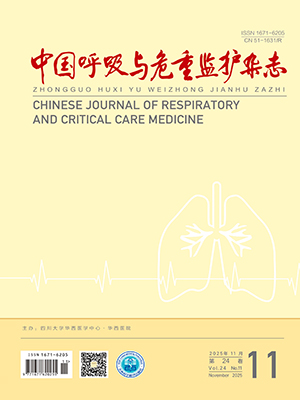Objective To investigate the mutations of quinolone resistance determinational region ( QRDR) in fluoroquinolon-resistant Pseudomonas aeruginosa strains isolated from patients with nosocomial pneumonia. Methods Eight-four Pseudomonas aeruginosa strains isolated from patients with nosocomial pneumonia in Xinhua Hospital during January 2006 to December 2007, from whom fluoroquinolon-resistant resisitant ( case) and fluoroquinolon-susceptible ( control ) Pseudomona aeruginosa were identified. The mutation of QRDR was tested by restriction fragment length polymorphism ( RFLP) and gene sequencing.The relationship between QRDR mutations and clinical prescription was analyzed. Results Mutation in QRDR was found in 42 isolates among the 50 fluoroquinlon-resisitant isolates( 84. 0% ) , while no mutation was found in fluoroquinlon-susceptible isolates. The mutation in GyrB Ser464 was found in 34 isolates ( 68. 0% ) . There was statistical difference in the usage of β-lactams between the GyrB-Ser464-mutated group and the non-GyrB-Ser464-mutated group( OR = 11. 3, P = 0. 003 and OR = 3. 5, P = 0. 023) , also in the time of fluoroquinolon usage before isolated ( P = 0. 038) . Conclusions The mutation of QRDR is contributing to fluoroquindor-resisitance of Pseudomona aeruginosa, most of which lies in GyrB Ser464.Abuse of β-lactams and fluoroquinolon may be the risk factors of mutation in GyrB Ser464.
Citation: SHAO Ping,GUO Xuejun,NI Peihua,LIU Ying. QRDR Mutations in Fluoroquinolon-Resistant Pseudomonas aeruginosa and Its Relationship with the Usage of Antibiotics in Nosocomial Pneumonia. Chinese Journal of Respiratory and Critical Care Medicine, 2009, 09(6): 539-543. doi: Copy
Copyright ? the editorial department of Chinese Journal of Respiratory and Critical Care Medicine of West China Medical Publisher. All rights reserved




